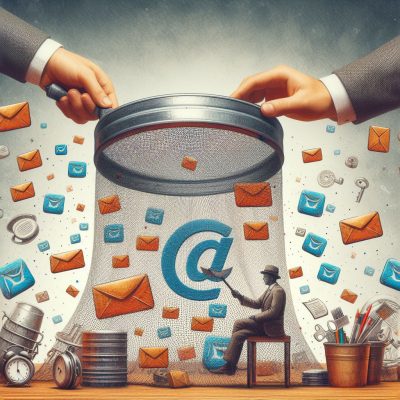5 Ways to Maximize Customer Lifetime Value in Ecommerce
June 1, 2017
You’ve probably heard the statement, “Acquisition costs more than retention” applied to ecommerce—which is basically just jargon for the idea that it costs more money to bring in new customers than it costs to keep current customers happy, loyal and purchasing.
So let’s just focus on those repeat customers for a few moments to discuss a concept that still confuses many folks in ecommerce: “Customer Lifetime Value” or CLV. If you use CLV, you can actually distill what you know about your regular customers into a number that will give you a concrete idea of how much your relationship as an ecommerce business with any of your customers means financially.
Oddly enough, an econslutancy.com study found that less than half of ecommerce businesses actually bother to calculate or apply Customer Lifetime Value to their marketing plans—although, on average, 20 percent of your customers (regular, loyal ones) can account for up to 80 percent of your revenue. Maybe it’s because the word “calculate” scares people off.
You can’t afford to let that be a concern, particularly as the same study found that the likelihood of selling to an established customer runs between 60-70 percent while the likelihood of selling to a new customer runs between 5-20 percent. And globally, just one customer lost can account for a loss of $243, and that’s not a number you want to multiply.
Besides, it’s not that hard to calculate CLV.
Calculating Customer Lifetime Value isn’t as Difficult as You Might Think
There are several online tools and even some simple scratch paper equations you can use to calculate CLV. We present two tools here that can get you started, but there are many others too.
The Simple CLV Calculation:
Brad Sugars, founder and chairman of the company ActionCOACH, shared his simple formula in this helpful Entrepreneur article:
(a. Value of the average sale) x (b. Number of a customer’s repeat purchases) x (c. Average number of months/years a typical customer stays with you) = CLV
So if your average customer spends $40 each month for 5 years, then your CLV would be:
40 x 12 (months) x 5 (years) = $2,400 CLV. Break that down into a yearly average by just multiplying the average monthly purchase amount by 12 months and you get $480 per year from the average customer.
The Harvard Business Review CLV Calculator:
The Harvard Business Review actually has an online CLV calculator. Just plug in the numbers and it gives you even more data you can use to project how much your loyal customers mean to you and how much you should invest to keep them and maximize what they’re willing to spend over time.
But What Can You Do with CLV?
CLV empowers you to use your marketing budget more effectively. Instead of spending blindly on every new marketing scheme, you’ll have a precise number in your budget that you can work with. Now that you know how much that loyal customer is worth, you can invest a portion of that CLV amount in creating programs, campaigns, discounts, etc. that speak to your regular customers in a way that entices them to spend a little more, a little more frequently. You’ll also have an idea of what you should budget to bring in new customers and turn them into regulars—because you need newbies also!
5 Proven Ways to Boost Customer Lifetime Value
The relationship you build with your customers is paramount. Greg Wise at Blogspot shared some data-based strategies that work to keep customers happy and loyal over time that all ecommerce businesses would do well to pay attention to:
1. Improve Customer Service
Every experience your customer has with you should be delightful—from the quality of your product or service, to how well it solves their pain points, to how easy it is to use your website, to how easy it is to get a real human being on the phone, to special discounts, and, last but definitely not least—how you fix problems when they arise.
An American Express survey discussed in this Business Insider article noted that 78 percent of customers failed to complete a planned transaction because of a bad experience with customer service. Furthermore, Those unhappy customers are more likely to share unhappy reviews that negatively impact potential customers. In fact, it takes up to 12 positive online reviews to make up for just one bad review from an unhappy customer.
Even more alarming, for every unhappy customer you know about, there are 26 other unhappy customers who stew about their experience without ever letting you know—while they tell all their friends about it.
On the other hand, truly delighted customers are likely to tell, on average, about nine of their friends.
Add that to the fact that if, at the very moment you find out a customer has had a less than delightful experience, you act, immediately and wholeheartedly (with compensation and a very personal apology) to make it right for that customer, you can boost customer satisfaction by nearly 75 percent! In fact, the same American Express survey found that 73 percent of people are willing to pay more for good customer service in general.
Look at customer service as another opportunity to delight your customer. Solve their problem with over-the-top (delightful) service. These customers may go on to become some of your biggest fans in terms of CLV.
2. Love Your Data
Create and tabulate surveys, organize customer focus groups and allow them to share in some usability testing activities. A/B testing is always useful to find out which of your products, services and marketing efforts are effective and which ones can be improved or eliminated in favor of a better solution. Constantly gather and churn through the data to understand your customers better so you can personalize your interactions with them to boost CLV.
3. Personalize Interactions
Your customers aren’t naïve—slap-dash efforts to personalize interactions with them won’t work and may turn them off. If a customer bought baby clothes 6 years ago and still gets offers for more baby items when their child is in first grade, that’s a turn off. Again—go to the data and think. And listen to your customers needs now.
Think about Amazon, for example. No two people in the world see the exact same Amazon home page. What you see corresponds directly to recent purchases or product views. If you purchase a box set of the Harry Potter books, they may suggest getting the moves to go along with it. Or, if they can tell from your purchasing history that you’re a reader, they might suggest trying out the Percy Jackson book series to get you over that difficult post-Harry Potter reading hangover.
Some other ways to personalize all of your interactions include:
Send email marketing from a human being within your company, with a real name of a contact your customer can chat with if necessary. Use the customer’s real name and respond personally if they write back.
Note: Be careful with the level automation you use. You don’t want a customer who bought a shirt that doesn’t fit to keep getting emails (even with her name on them) about advice on how accessorize it.
Use social media as another touch point to interact with your customers personally. Respond anytime they leave a post and get to know them better that way. Invite them to participate in trials, surveys and focus groups. The more interaction you have, the more data you can gather and the more you’ll be able to personalize your offerings. You can also use this information to create customer personas for enhanced personalization (more on that below).
4. Cross-Selling and Upselling
First, it’s important to understand the difference between cross-selling and upselling:
Upselling—Encouraging the purchase of an additional product to complement the one the customer is already purchasing. If the customer is buying a digital camera, you’d suggest getting an extra battery, charger or memory card. Those are all things necessary to use the camera. You can also upsell to a better, more expensive digital camera with cooler features than the one the customer was looking at.
Cross-Selling—Encouraging the purchase of an item tangentially related to the original product. For example: your customer is buying a shirt and you suggest completing the outfit with a matching scarf.
Another Econsultancy study found that upselling is 20 times more effective than cross selling. If the additional product is featured as necessary addition to the original, the customer will be more willing to add that to the cart if the price is right.
Use your data and don’t be that website that tries to cross-sell only vaguely relevant items—like when someone’s looking for a hammock and they get suggestions for tents. That’s a turn off. The key for successful upselling and cross-selling is how precisely relevant the other item you’re trying to add on really is for the customer at that very moment. Some effective ways to do this include:
- Making special discounts on a bundle. Like the camera example—the customer needs the batteries, charger and memory card anyway. If you bundle them so that buying the bundle is less expensive than buying each piece separately, you’re still upselling and making a little more on that purchase than you would have.
- Show off how the cross-sell item really accentuates and makes the original item a better purchase or that you can get more wear or use out of the original item.
Whatever strategy you use to upsell or cross sell, the bottom line is that you must personalize the upsell or cross-sell by understanding your customer’s real, current needs and desires.
5. User Customer Personas and Segmentation
Use your data to develop “characters” who represent different types of customers in each of your market segments. If your business has a preponderance of single women customers aged 25-45 who live in the Seattle area, you can design a persona for that demographic. Maybe call her Sabrina—you get the idea. You can get even more granular and create multiple personas that help you more effectively target your marketing campaigns to reach those customers most likely to keep purchasing.
Another Way to Think of Customer Lifetime Value
It may seem crass to boil down your customers’ worth into monetary terms, and although this is certainly helpful for your marketing, there’s a reason customer service is the number one way to increase CLV. Your customers are, like you, human beings in need of interaction and solutions to problems in life. When your customers feel that you truly care about them and their needs, great things happen.





